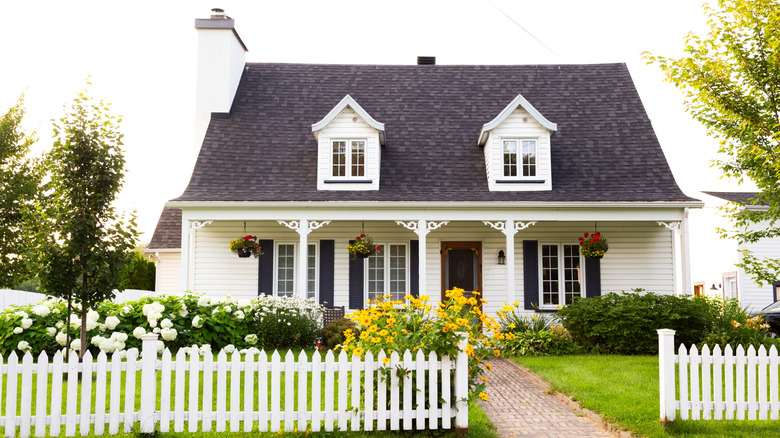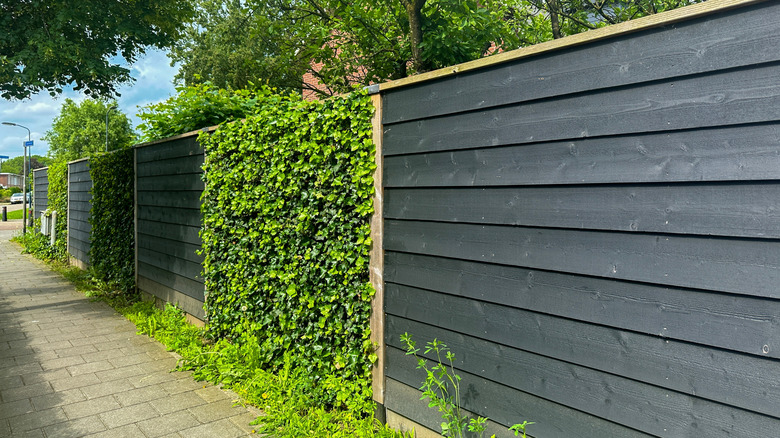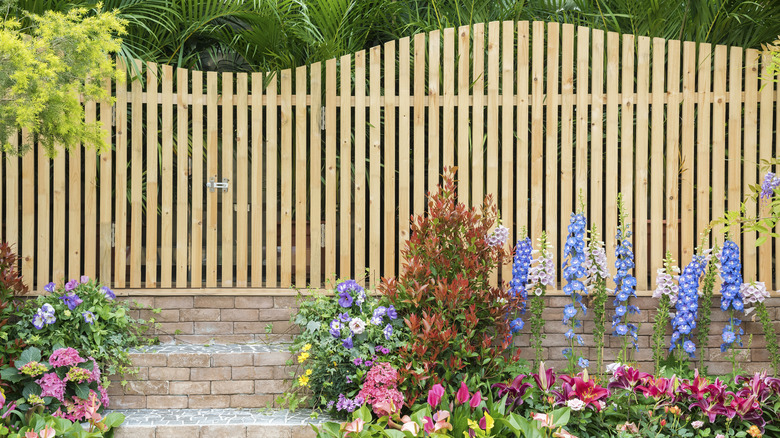The Best Fence Colors For Curb Appeal That Aren't Basic White
Boosting curb appeal isn't easy and can be hard to do on a budget. It's a combination of a lot of factors, including how well your lawn is maintained, the condition of your home's exterior, and the landscaping decisions you have made. Another aspect of curb appeal to consider is your fencing. Not only do you want your fence to be in tip-top shape, but the color should also be attractive. While white has traditionally been a fence color associated with a pleasant appearance, there are other color options available for those wanting more of a dynamic look that still boosts your property's curb appeal.
Before you go to the paint store and pick the first shade you like, however, it's important to stay pretty conservative in your fence's color. If you choose a color that's too bright or unconventional, you risk your yard sticking out like a sore thumb. Additionally, you'll want to ensure that whatever hue you choose works well with other aspects of your property, such as your home's color or landscaping features. Among the best fence colors are black, green, blue, or natural wood stain. Each of these offers its own unique benefits that will increase your curb appeal and lend an added level of intrigue over what could be considered the tired-out white fencing of old. Additionally, if you choose to embrace a non-conventional fencing color, you'll instantly create a unique vibe for your property among the multitude of homes with the same fence color.
Keep it classy with black or green
If you desire a bold and modern appearance for your yard, you can't go wrong with a black fencing job. Despite being dark, black works well for a number of home design features and styles, whether you have a more traditional or contemporary house. It is also sure to create a dramatic but pleasing visual against the plant life in your yard, whether that's a tamed and manicured array of plants or a more wild and free-style garden.
A green fence might not be your first thought when brainstorming colors either, but it can be a versatile choice. One of the benefits of a green fence is that it blends into the greenery and landscaping of your property, which can make your garden look bigger than it is. Beware that choosing a shade that is exactly the same or incredibly close to your plant life might be viewed as boring — instead, choose a green that is noticeably lighter than your landscaping for the best results. If you are choosing black, green, or another color of paint for your fence, opting for acrylic paint can provide reliable results that will hold up well in outdoor conditions.
Be bold with blue... or neutral with natural
If you want to depart from convention altogether, there are few colors that will create more of a statement than blue. Still, a blue fence can add extra dimension to your property without looking tacky (so long as you avoid choosing an overly bright shade of blue). Blue works well with a number of other home design features, too, whether your property has plenty of wooden accents or if there's a lot of white at play. Basically, so long as your home is a neutral color, a tasteful blue shade should work well.
Last but certainly not least is a natural wood stain. Wood works well with any landscaping or property design, and it doesn't risk going out of style (which could be a risk if you chose one fence color and later decided to paint your house a new hue). While blue, black, or green will certainly give your fence a leg up in terms of uniqueness, natural wood fences are loved for being timeless. Also, beyond needing to stain and seal your wooden fence every several years, you won't have to worry about repainting it if it begins to chip or the paint color wears or fades unevenly. If a plain wooden fence feels a bit lackluster to you, don't worry: there are different types of wooden fences for you to consider that can bring some extra color and personality to your property.


